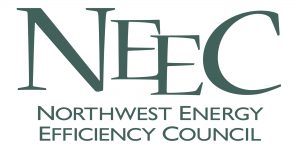Last week, a new report released by the Seattle Office of Sustainability and Environment reveals that Seattle’s benchmarked buildings are reducing climate emissions, saving money, and improving performance. Seattle’s Energy Benchmarking ordinance went into effect in 2011 and requires owners of commercial and multifamily buildings 20,000 sq. ft. and larger to track their energy performance and report it annually to the City of Seattle.
“Seattle’s buildings are responsible for one-third of Seattle’s climate pollution. City programs like Energy Benchmarking give building owners the tools they need to be part of our climate solutions,” said Jessica Finn Coven, director of the Seattle Office of Sustainability & Environment. “Tracking and reporting energy use is the first step towards improving building performance and this analysis shows that Seattle is on the right track.”
The Seattle Energy Benchmarking program is a key piece of Seattle’s climate strategy. In addition to the climate benefits, the program also assists building owners and managers by showing how their buildings are using—and in many cases wasting—energy. Benchmarking helps building owners stay competitive in a market where tenants and prospective buyers are driving demand for increased for energy efficiency in buildings.
Highlights from the Seattle Energy Benchmarking Analysis Report include:
- Buildings reporting three or more consecutive years of data have reduced overall energy consumption and greenhouse emissions. From 2014 to 2016, total energy use for these buildings declined 3.7% and total emissions declined 4.8%.
- The median ENERGY STAR score for all buildings has increased by seven points—or 10%—since 2013 while the program has maintained over 99% compliance every year. Additionally, between 2013 and 2016, Seattle’s Energy Benchmarking program added 136 buildings and nearly 43 million square feet of space as Seattle’s construction boom has continued.
- Although energy improvements since 2014 have led to reduced emissions, many buildings still have room for significant improvements. Hotels, hospitals, high-rise multifamily buildings, labs, and restaurants have the highest emissions per square foot and offer the largest savings opportunities.
Seattle’s benchmarked buildings include more than 3,300 properties, representing 323 million square feet of Seattle’s largest commercial and multifamily buildings. In almost every building category, including offices, residential buildings, retail stores, and educational institutions, median energy use per square foot is lower than previous years even when accounting for variations in weather. This is the result of owners adopting more efficient technology, improving building operations and implementing utility incentivized energy efficiency measures.
Data on Seattle’s benchmarked buildings is now easier for the general public and potential tenants to access. Earlier this year, Seattle moved to online building performance profiles to allow for easier public sharing and customized reports for all buildings including information on ENERGY STAR scores, fuel usage, greenhouse gas emissions, and EUI (energy use intensity). The online profiles also give an estimate of annual energy costs and savings opportunities.
